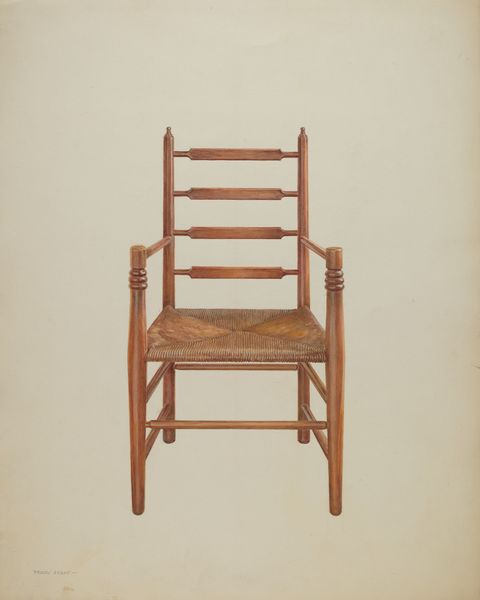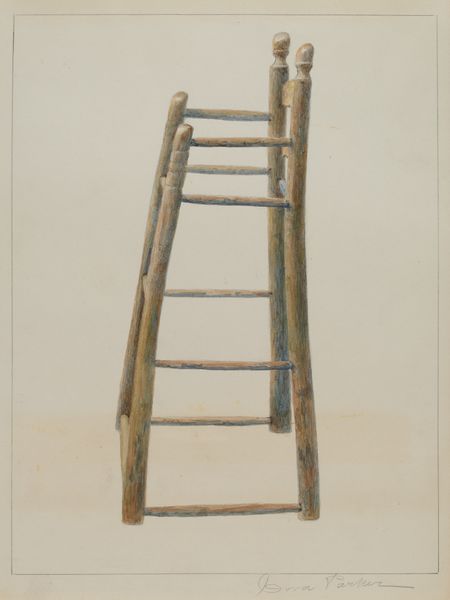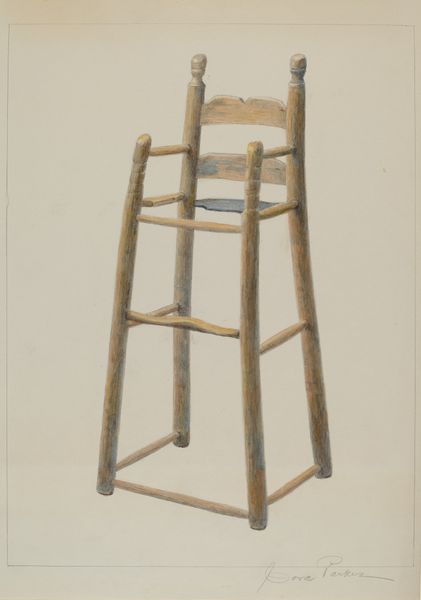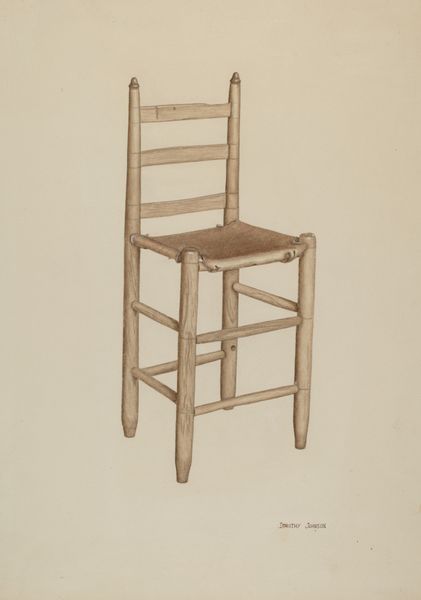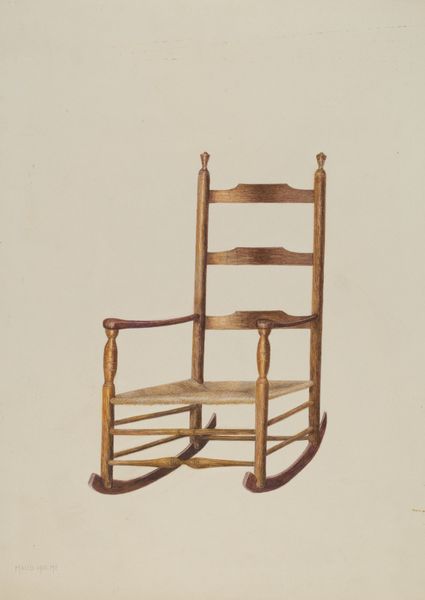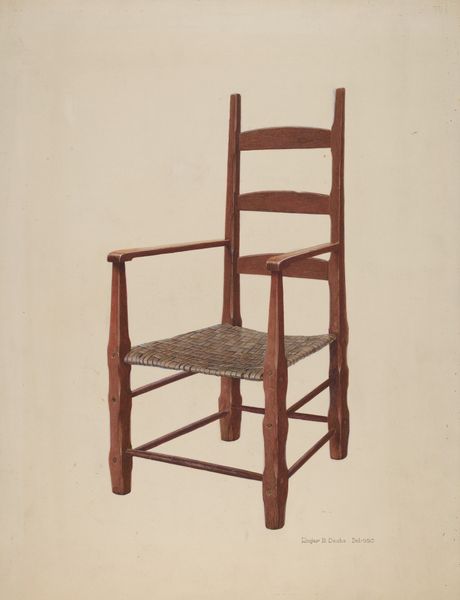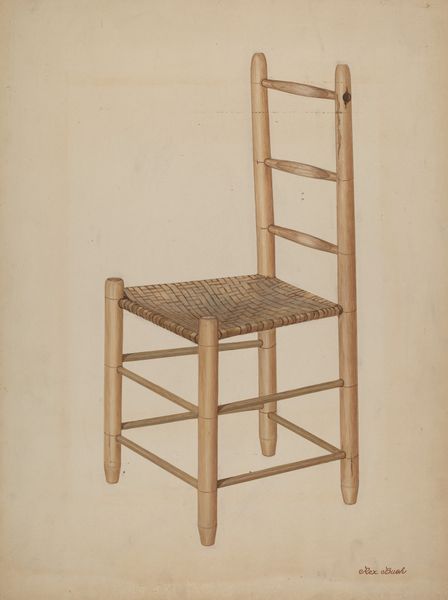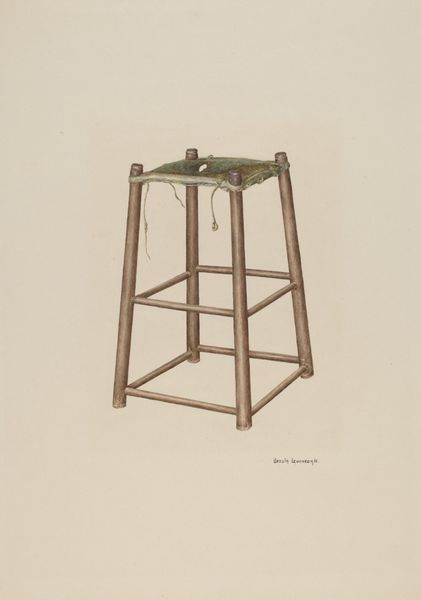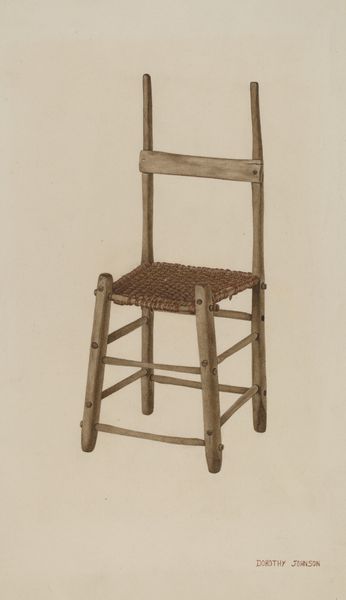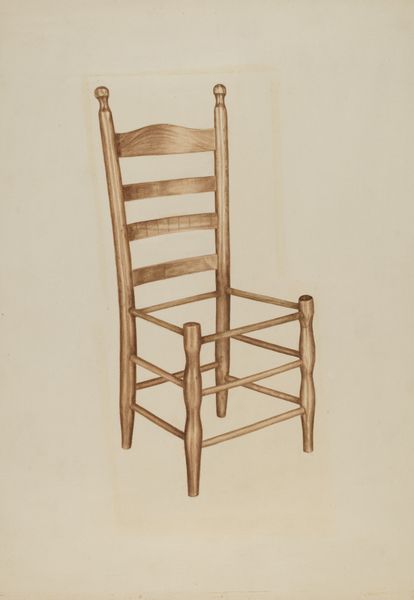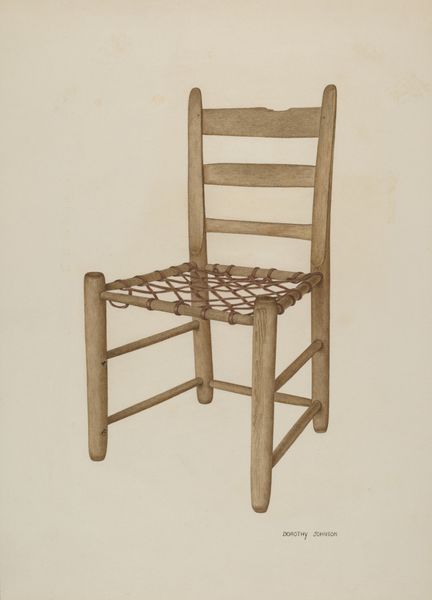
drawing, paper, pencil
#
drawing
#
paper
#
pencil
#
watercolor
#
realism
Dimensions: overall: 34.6 x 24.6 cm (13 5/8 x 9 11/16 in.) Original IAD Object: 15"wide; 13"deep; 34 1/2"high.
Copyright: National Gallery of Art: CC0 1.0
Curator: Before us is Dorothy Johnson's "Child's High Chair," rendered in pencil and watercolor on paper in 1939. Editor: It's quite a simple composition, isn't it? Rather muted tones; almost ghostly, the way the chair seems to emerge from the paper itself. The texture, especially of the fur on the seat, is intriguing. Curator: I'm drawn to how Johnson meticulously captures the utilitarian form of this object. Note the stark lines, the careful attention paid to the joinery, the slight imperfections in the wood itself. It speaks to a functionalist aesthetic, reducing the object to its most essential components. There is a definite sense of realism throughout the work. Editor: Absolutely, and considering it was made in 1939, one wonders about the socio-economic context. Was Johnson depicting an everyday object accessible to most families, or perhaps hinting at the scarcity many faced during the Depression? It subtly engages the public, asking us to consider access and class through something as mundane as a chair. The very ordinariness creates the social interest. Curator: I'm inclined to view it through the lens of artistic choice, examining her deliberate use of line and shadow to define volume and space. Observe the subtle shift in the gray tones as she renders the light playing across the surface of the wood. It is Johnson’s mastery over value that allows her to portray what feels like the volume and form of real space on this two-dimensional plane. Editor: But isn't that precision serving a broader narrative? The child's high chair, presented alone and unadorned, prompts considerations about family life, perhaps absence, or even a critical perspective of how children are socially constructed through simple furniture. I like that you appreciate the formal beauty and how she brings it forward with tone. But tone, color, line are rarely abstract choices for a woman depicting furniture. Curator: It is difficult to not see the chair's form through what must have been her eye. Thanks for opening up different avenues of interpreting Johnson's technical drawing here. Editor: And thank you for the careful consideration you always provide when exploring what can be felt as beautiful.
Comments
No comments
Be the first to comment and join the conversation on the ultimate creative platform.

